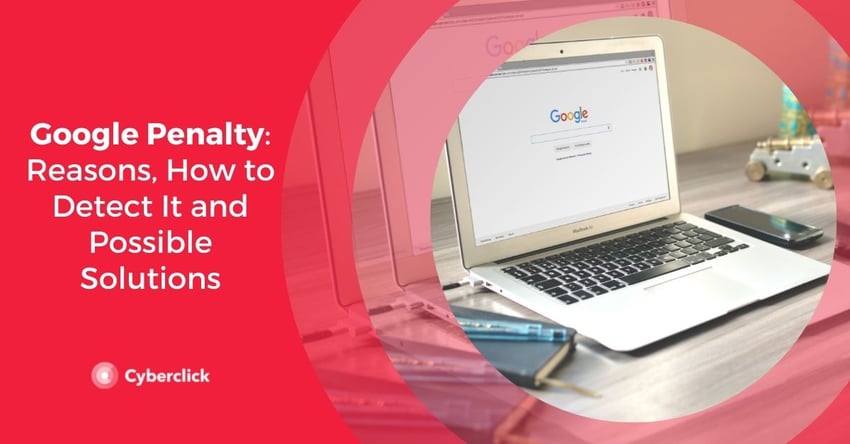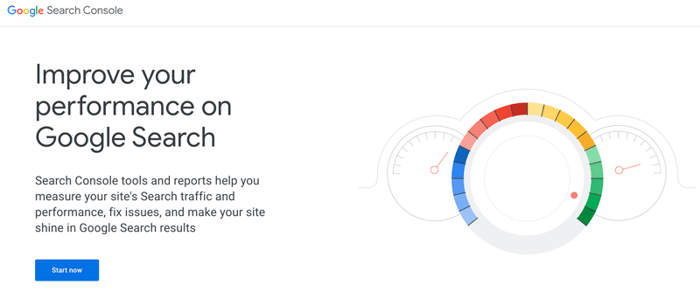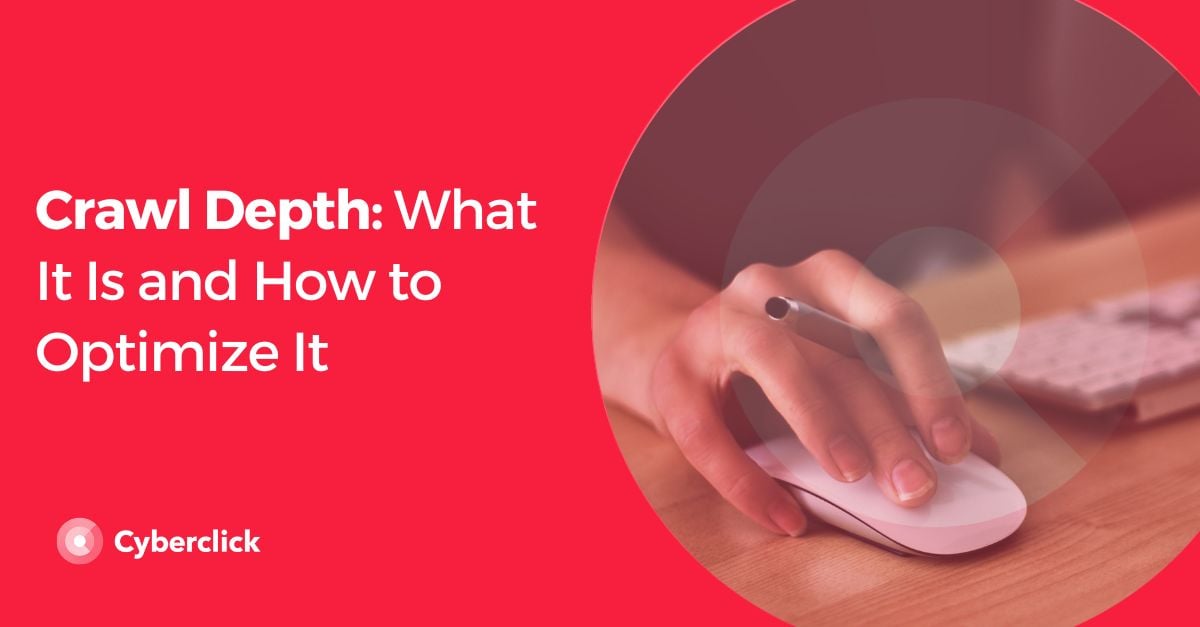When trying to achieve a good SEO positioning in a fraudulent way or violating any of the Google Webmaster Guidelines, you could get a google penalty.
If this happens to you or your company, don't worry! Your inbound marketing efforts are not doomed as there are some solutions. Read on to learn more!


What Are Google Penalties?
Google penalties are issued when a website violates one or more Google Webmaster Guidelines.
Google's guidelines are publicly accessible, so even if some of them are difficult to understand or interpret, it is the site owner's responsibility to stay informed and respect the guidelines.
The purpose of the penalty or punishment is to penalize websites that achieve a good SEO positioning and gain web traffic fraudulently, as this harms the websites that are practicing fair inbound marketing strategies. It is also a way to ensure users have a good experience by displaying the web pages in the top results that respond to their search intention with quality information.
Reasons Google Can Penalize a Website
There are two types of Google penalties: algorithmic and manual. Algorithmic penalties are issued when websites do not comply with Google's guidelines, which are constantly evolving. When Google announces an update to its algorithm, web pages must be updated to comply with what is required to avoid receiving a penalty.
Manual penalties, on the other hand, are issued when there is a violation of Google's guidelines. Websites can be penalized for user-generated spam, keyword stuffing, publishing content without any value for the user, or using unnatural backlinks and internal links.
Black Hat SEO: 6 Bad Practices to Avoid
Black Hat SEO is one of the most common illegal practices. It allows you to rank on Google and other search engines very quickly. It is based on tricking the search engines into displaying your website in the top positions without too much effort. It isn't an effective strategy in the long term since it doesn't provide any kind of value to users and Google will end up penalizing the website as soon as it detects it.
Any of the following tactics are considered Black Hat SEO:
-
Hidden text: This is one of the oldest Black Hat SEO practices. It consists of hiding text on the web in which the keyword is repeated continuously. To hide this type of content, the text is usually put in the same color as the background, or the size of the text is reduced so that users don't notice it.
-
Keyword stuffing: This consists of using too many keywords in a small amount of text. Using keywords too much detracts from the quality and value of the content, ending in a negative experience for the user.
-
Cloaking: This is when a server is configured so that search engines are presented with a very well-optimized web page when in reality what is shown to users is the opposite.
-
Article Spinning This method consists of creating modified versions of well-positioned articles using synonyms to manipulate search engine rankings.
-
Link buying and selling: It is helpful for websites to be linked to by other websites that have high domain authority. This should occur naturally and organically because of quality content. If you buy and sell inbound links in a non-organic way, you are using a Black Hat SEO technique and will be penalized.
-
Spam: A website is penalized when users spam a website themselves and if they spam other sites with backlinks to their own site in an abusive way.
How to Find Out if Google Has Penalized Your Site
The Google penalty may reduce your PageRank, causing your website to lose between 30 and 950 positions in search rankings, It could also de-index your page or domain depending on the seriousness of the violation, which would result in a massive drop in traffic.
The best way to check if you are not in violation of any of Google's terms is to use Google Search Console, a tool that will warn you of any algorithmic penalties. If Google detects that fraudulent actions have been carried out, the penalty will be applied automatically and without explanation.

If no warning appears in Search Console despite a drop in web traffic, you should input "site: [website name]" into Google. If the site does not appear in the results, this could indicate that Google has penalized your website or that it has been deindexed. The latter can be checked in the CMS platform.
If the web page is correctly indexed, you can open up Google Webmaster and click "Crawl Errors". This will require having Google Analytics installed on the website. You can also check the Googlebot updates since it could be a penalty due to the lack of awareness of Google's updated guidelines.
How to Fix a Google Penalty
If your website has been penalized by Google, you should focus all efforts on fixing the errors. Failure to do so could affect your entire website.
The first step should be to detect the reason for the penalty. Find out if it is because of changes in the Google algorithm or if illegal actions have been implemented in order to position quickly in search engines. Remember that if it is due to a change in the algorithm, check the notifications in Google's Search Console. In case there is no notification, it is important to make sure that no Black Hat SEO technique has been used.
The second step is to make all the necessary changes to the web page. Check the loading speed of the web page, offer quality content, use keywords in a natural way, and only include clean links that respect the quality guidelines.
In case the content published on the website can't be optimized, the best option is to delete it and re-create it from scratch. By making all the appropriate changes, the search engine will detect the changes and remove the penalty when it crawls the web page again. However, if the penalty was issued because of malpractice, the site owner will have to submit a reconsideration request to Google.
Keep abreast of updates in Google's algorithm proactively seek information about them to avoid any confusion. Always stray away from using Black Hat techniques, because although they promise quick results, they will not help you establish trust with your users and will not yield long-term benefits.
Remember, for SEO to work effectively, go slowly and do things the right way!
Responsable de la estrategia de contenidos y visibilidad en Cyberclick, con enfoque Allbound y especialización en posicionamiento SEO, GEO y automatización con IA. Gestión avanzada del CRM con HubSpot: base de datos, workflows, lead nurturing, scoring y reporting. Experiencia en marketing digital, comunicación corporativa y periodismo, uniendo estrategia, creatividad y tecnología para captar y convertir leads cualificados.
Responsible for content and brand visibility strategy at Cyberclick, with an Allbound approach and specialization in SEO, GEO (Generative Engine Optimization), and AI-powered automation. Advanced HubSpot CRM management: database segmentation, workflows, lead nurturing, scoring, and reporting. Background in digital marketing, corporate communications, and journalism—combining strategy, creativity, and technology to attract and convert qualified leads.





Leave your comment and join the conversation